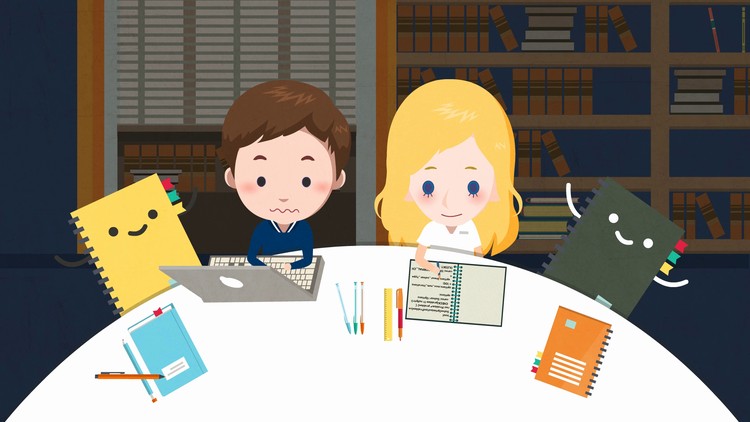Every Job Is a STEAM Job
Posted by VALENTINA PAN

From our affinity for social media and our close friendship with smart devices, we live in a STEAM-related world. STEAM education industries are woven closely into every strand of our lives. It’s not hard to image that STEAM occupations are among some of the most in-demand and best-paid STEAM job nowadays.
The Bureau of Labor Statistics lists some STEAM job that may spark your and your kids’ interest.
-
Software developer, applications developer
You can almost do anything through apps on your mobile devices these days, and that probably explains why software and applications developers are so in demand. It’s projected that, by 2026, the total number of software developers in the U.S. is likely to be three times the current number, reaching more than 1 million. The median annual wage of a software developer in 2016 was $100,080.
-
Electrical/Mechanical engineer

Engineering makes it possible for people to live more easily and comfortably. By 2026, the total projected number of electrical engineers will reach over 200,000, and for mechanical engineers, the total number might reach more than 300,000. The 2016 median annual wages were $94,210 and $84,190, respectively.
-
Data Scientist

Data science is an interdisciplinary area. It combines data analysis, statistics, and machine learning and such related fields to obtain knowledge of data. Data scientist deals with large volume of data from various resources by conducting independent research. According to the United States of Labor Statistics, the employment of data scientist in 2016 is expected to rise 19 percent. According to University of Wisconsin, the median starting salary for a data scientist remains at $95,000.
That said, it doesn’t mean everybody should chase after a STEAM job if it’s not where their passions lie. The world we live in only gets better the more different talents, backgrounds, and interests contribute to it. However, STEAM education is something that everyone needs in one way or another, potentially benefiting greatly from it.
It is true that STEAM focuses on science, technology, engineering, arts, and math, but STEAM education teaches people more than just those subjects. More importantly, STEAM education provides a different kind of training because it asks students to use their creative skills and gets them thinking within a different context, which can be universally beneficial for people in other industries than STEAM alone.
According to a 2014 Census Bureau report, 74 percent of graduates from STEM programs were employed outside their fields.
In other words, STEAM is a set of skills that everyone can use on a daily basis no matter what industry they are in. Nowadays, with more and more traditionally non-tech fields incorporating STEAM to improve their operations and increase efficiency, it is becoming true that—in reality—every job is a STEAM job.
-
Interior Designer

The interior design field provides a really good example.
Many people tend to view interior design as an occupation that only requires some artistic qualifications. In fact, interior designers use STEAM knowledge throughout their design process. It takes more than an artistic sense; it also takes knowledge of material science, psychology, and math to be a good interior designer.
Modern interior designers have to know where their materials come from, what they are made of, and how these chemicals and elements will impact homeowners. In the meantime, interior designers’ choices of materials can also have a huge impact on the environment. To be able to achieve all these, designers need to be very knowledgeable about material science.
Psychology plays an important role in interior design as well. According to Dawn Chapnick of Dawn Chapnick Designs, “[Interior design psychology] is a direct study of the relationship between an environment and how that environment affects the behavior of its inhabitants, with the aim of maximizing the positive effects of this relationship.” It means that colors, symmetry, room size, and geometry, to name a few factors, can all affect people mentally, and interior designers are responsible for understanding the tricks to create positivity.
STEAM would not be the same without math and neither would interior design. Designers need to make both quick estimates and detailed and accurate calculations to show their clients they know what they are doing and win clients’ trust. In addition, interior design incorporates some advanced mathematical concepts, such as Golden Ratio, in order to make sure the design is both practically and aesthetically pleasing.
-
Hospitality industry

Another example that can lend support to our point is the traditional hospitality industry. This industry fully embraces technology and people with talents in a STEAM background. Data analysis is used to help people in the industry understand customers’ needs better. The traditional hospitality industry invests in a great deal of energy-saving technology to lower their operational costs and increase their social footprint. Without the support of STEAM, it would not be possible to make all these things happen.
There are many examples of STEAM being used across all industries, and we can’t emphasize enough how important STEAM can be for your or your children’s careers. However, the question really boils down to this: How can we best prepare our youngsters for STEAM job in the classrooms?
-
In Classroom Jobs

The good news is that there are indeed some things we can encourage students to do in the classroom to pique their interest in STEAM. For example, assigning classroom jobs is a good way to help students get a feel for the types of STEAM work available and how the different types of education come together to complete a project. Using role play for each group project, teachers can have each person in the group play someone with a different type of STEAM career. For instance, one group could consist of a graphic designer, creating the artwork for the finished presentation, a product designer who provides the sequence of the presentation to the graphic designer, and one conservator who curates each element for the product designer. Through such classroom practices, students get to experience STEAM by doing it.
Another, easier way to help students get a feel for STEAM is to partner with companies and organizations in various STEAM industries and invite them to come into the classroom. There, the companies can do presentations regarding the STEAM careers they represent and how STEAM education can lay a foundation for whatever careers the students want to pursue.
It’s probably easiest to promote STEAM at school with the help of teachers and varieties of programs and practices. At home, parents with limited resources and experience might find it more challenging to teach their kids STEAM. Coding robots offer a very effective solution to this problem.

Childhood researchers and educators believe that, for children in the early foundational years to learn STEAM, it’s critical to engage them in the STEAM learning process in a fun and tangible way. Coding robots are rapidly growing in popularity as an ideal way to meet this requirement. Coding robots make it possible for children to learn to code as they play with their toys. Meanwhile, coding robots bring software engineering (computer programming) and hardware product development together to offer the more comprehensive engineering aspect of STEAM to children. Not only STEAM education could benefit kid’s future career, but also it plays a important role in the areas. Here is the blog the we explained why STEAM education is important in 2019.
Codey Rocky by MakeBlock is specially designed to lead children into the world of avant-garde technology with its built-in AI and IoT functionalities. It incorporates mBlock, a software that supports both block-based and Python programming, and gives children a playful and innovative way to create dot-matrix animations and design games.
If your kids show an interest in art, the Neuron Artistic Kit is what you are looking for. The kit includes six supplementary cases where kids can build creations and bring them to life by easily coding the eight programmable electronic blocks. By manipulating different parts, children are able to create a ukulele, cloud lantern, magical drum, and more.
We believe that STEAM education can help children explore their potential and open up a whole new world to them that will benefit them tremendously for the rest of their lives.

